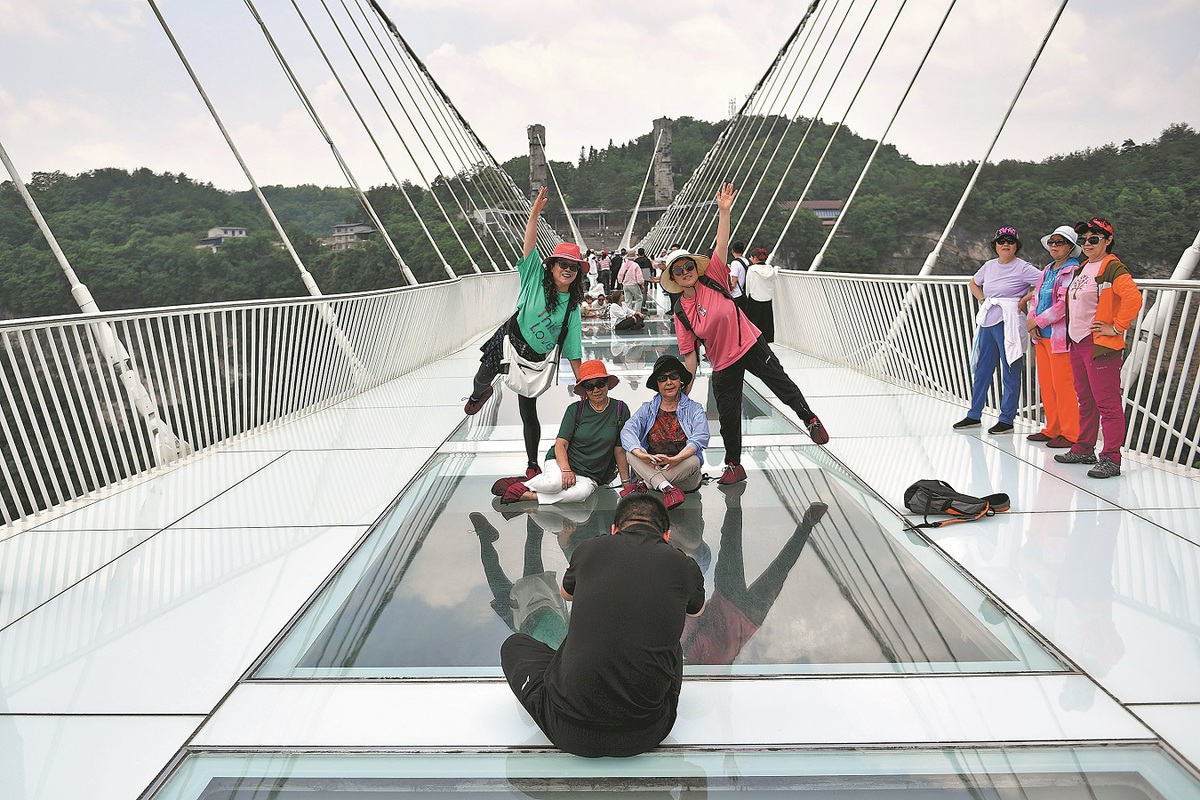

Payments made easy
Led by the national policy, Beijing has taken a series of measures to improve international travel services this year, said Wei Rong, director of international exchanges and cooperation at the Beijing culture and tourism bureau.
A new portal website for the international community, available in nine languages, has been up and running since March. Inbound traveler payment demonstration sites have been established at the Beijing Capital International Airport and the Beijing Daxing International Airport, Wei said.
"Payment services in key areas such as dining, accommodation, transportation, tourism, shopping, entertainment, study and healthcare have been comprehensively optimized," Wei said.
Tourists from Southeast Asian countries can use their local apps to pay in China, as some of them have connections with the payment giant China UnionPay, said a staff member from the company at the Beijing conference.
"For long-haul tourists from Europe and the US, they can download UnionPay and use their local bank card to apply and deposit money onto a virtual card, before they can use UnionPay for purchase," the staff member said.
The positive measures have helped Beijing receive 790,000 inbound tourists from January to April, a year-on-year increase of 291 percent, and 70 percent of the pre-pandemic level in 2019, the Beijing bureau reported.
International flights between Beijing and outbound destinations including Seattle, Dublin and Madrid have resumed, and the frequency of flights to New York, Los Angeles, Munich, Seoul and Tokyo has been increased.
Daxing airport has also opened new international routes to Riyadh in Saudi Arabia, and Jeju in South Korea.
As a result, Beijing's total air passenger throughput reached 37.54 million in the first four months, a year-on-year increase of 49.3 percent, and equal to 114 percent of the 2019 level for the same period.
The international and regional passenger throughput was 5.83 million, a year-on-year increase of 371.2 percent, reaching 65 percent of the 2019 level, according to the bureau.

So much to offer
Like the US tour operators' representative Dale, Laura Mandala from the United States was also invited to join the two tourism events last month.
Mandala runs a tour research firm in Alexandria, Virginia, and believes the promotion of remarkable attractions like China's UNESCO World Heritage Sites will encourage more US travelers to visit "because they cannot see them anywhere else".
She added that the easiest segments to target are travelers who have already visited China and those from Asia.
She said she was still mesmerized by her "wonderful" spa experience in mountain hot springs in Chongqing in 2019, when she also took a cruise trip along the Yangtze River.
"It was fantastic, and it's a trip I can sell to women travelers," she said.
Brian Linden, who has lived in Yunnan province for more than two decades and runs a hotel, said he was glad to join the events in Beijing and Xi'an.
"It's been exciting to see so many Americans and also other foreigners. Everyone discussing travel again makes me feel more optimistic," Linden said.
He said he hopes more similar meetings will be staged in the future in China.
A senior player in the industry who has received many inbound travelers over the years, Linden proposed associating China travel with the idea of being "cool". "I've been to more than 110 countries, but China has so many more scenic spots to offer and many of them are worth seeing," Linden said.
He also suggested the country further tap into its well-developed high-speed railway for inbound travelers.
"We should have a special pass for foreigners, a special pass that they could buy. So for two weeks or three weeks, they would be able to travel throughout China by train," he said.
"There's still a lot more about China that needs to be shared with global travelers," he added.